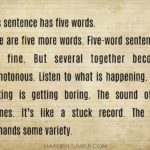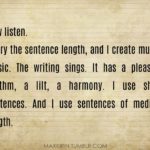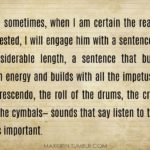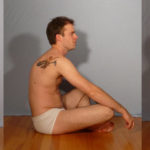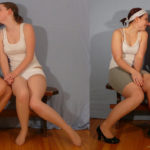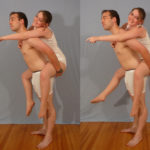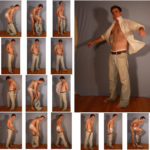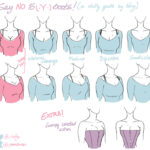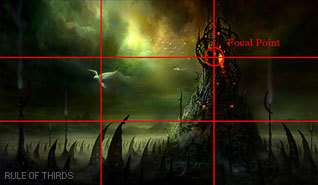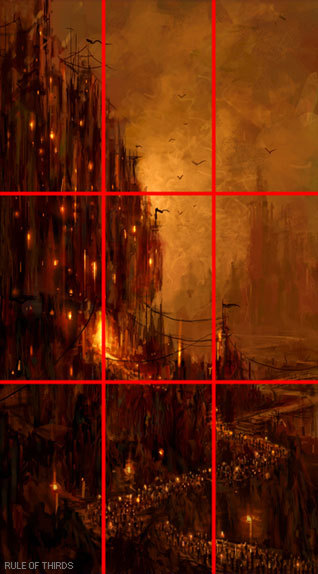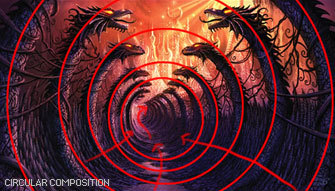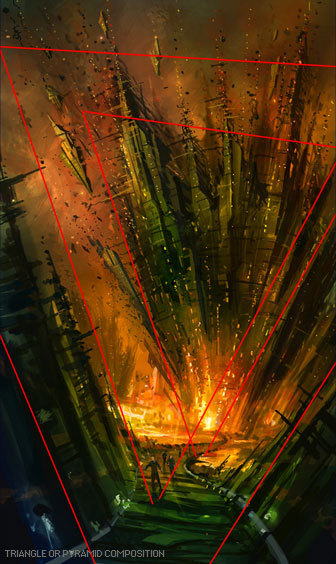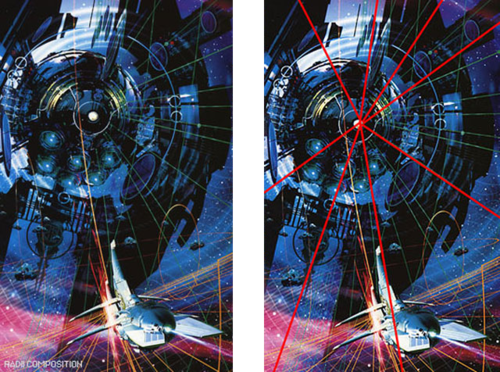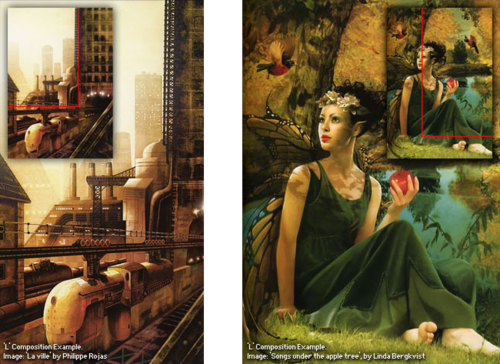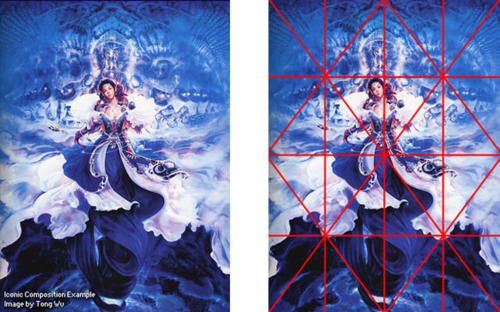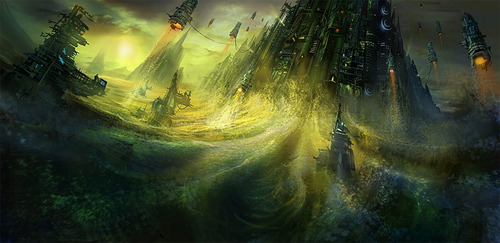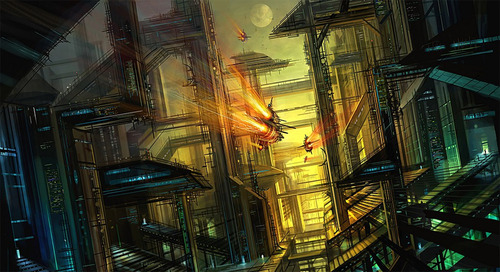“This sentence has five words. Here are five more words. Five-word sentences are fine. But several together become monotonous. Listen to what is happening. The writing is getting boring. The sound of it drones. It’s like a stuck record. The ear demands some variety. Now listen. I vary the sentence length, and I create music. Music. The writing sings. It has a pleasant rhythm, a lilt, a harmony. I use short sentences. And I use sentences of medium length. And sometimes, when I am certain the reader is rested, I will engage him with a sentence of considerable length, a sentence that burns with energy and builds with all the impetus of a crescendo, the roll of the drums, the crash of the cymbals—sounds that say listen to this, it is important.” – Gary Provost
Want more writerly content? Follow: maxkirin.tumblr.com!
Tag: reference
fucktonofanatomyreferencesreborn:
fujo:
SenshiStock’s gallery consists of millions of pictures that are free to use as reference.
General Drawing Poses
Sit and Kneel
Dramatic and Reaching Drawing Poses
Magic and Hogwarts Drawing Poses
Staff Weapon Pose Reference
Hammer, Axe and Bat Pose Reference
Sword Weapon Drawing Reference
Small Bladed Weapon Pose Reference
Gun Weapon Pose Reference
Bow and Arrow Archery Stock
Foreshortening and Perspective Poses
Dynamic Flying Falling Action Poses
Deafeated or Laying Drawing Poses
Magic Crystal
Magical Girl Wand Weapon
Transformations and Dance
Cards
Back Pose Reference
Pin Up Inspired Poses for Drawing
Performances Poses
Life in General Poses
Fights and Fighting Pose Reference
Leaning Poses
Classic Sailor Senshi Poses
Wings
Sailor Moon Villains
Pairs
Romance or Couples Pose Reference
All the Male Stock
Hanging Stock Drawing Reference
Three or More Groups
Instruments
Mirrors
Whip
Technobabble
A glorious fuck-ton of human pose references.
reblogging because i feel like maybe i can draw again. sometime maybe soon.
THANK YOU AAA
psa for the yoi fandom: russian names & how to use them
I’m going to start by swearing this isn’t me just complaining but a general resource for the Yuri on Ice fandom because I’ve noticed some mistakes in the naming conventions used among the fandom and want to help correct them. Especially in how the fandom treats diminutives. I absolutely love seeing the huge amount of interest in Russian diminutives, etc. in fanart and fics and hopefully this breakdown will help continue that trend and interest and even spur some more ideas in fandom content.
So let’s go through some important details below the cut!
Y boobs are big pet peeve of mine, it’s 2017 and I still see them everywhere so I made a lil’ guide on natural looking boobies.
Boobs are amazing, give them love.
I’ve seen a lot of videos going around of urban-dwelling critters coming to humans for help with various problems, ranging from boxes stuck on their heads to young trapped down a storm drain, and it’s gotten me to thinking:
On the one hand, it’s kind of fascinating that they know to do that.
On the other hand, setting any questions of how this sort of behaviour must have arisen aside for the nonce, does it ever strike you how weird it is that we’ve got a whole collection of prey species whose basic problem-solving script ends with the step “if all else fails, go bother one of the local apex predators and maybe they’ll fix the problem for no reason”?
well, come to think of it, we’re at the top of the food chain but we almost exclusively hunt and kill prey out in the country.
raccoons and possums and foxes and crows all succeed in an urban environment because they’re opportunistic and observant. and almost none of them would have observed us pounce on one of their species and then start eating it, you know? a lot of them would have observed that we scream and chase them out of wherever we don’t want them to be, but other animals are territorial too. but there’s a number of situations where humans feed whoever’s bold enough to take them up on the offer, and we do tend to pull garbage off of other animals as soon as they slow down enough for us to catch. ‘a human got me but nothing bad happened’ is a much more frequent thing than ‘a human got me and tried to eat me’.
anyway like, we’re masters of our environment, we make weird shit happen all the time, we have lots of great food and sometimes we share, and we almost never eat someone. it makes sense for urban animals, over the last century or so, to just keep an eye out for opportunities to use us, and to pass the habit on to their kids.
It really is a weird, funny thing. Like yeah, technically they’re predators, and they get pretty screamy, especially if you try to take any of their stuff… but given the chance it seems like they’d rather help us out and sometimes they’ll just randomly give you food, so???
I mean, I guess in fairytales and myths we’ve got our fair share of stories about dangerous people/creatures who might well kill you or otherwise ruin your life, but to whom people nonetheless turn for help in desperate circumstances. So it’s not like the perspective is exactly a foreign thing to our own mindset, really… It’s just that, y’know, we can’t actually go make a deal with the faeries when there’s something we can’t figure out.
(Which brings me to an interesting thought about the ubiquitous rule about never eating the faery food lest you find yourself forever unsatisfied with anything in the human world – and the potential parallels to the dangers of feeding wildlife human food lest they become addicted and too tame and dependent to be safe for either themselves or us. Hmm.)
Okay, but that last bit with the Fae…makes almost perfect sense.
Of the stories I’ve read, the food of the Fae, its origins and effects, are often strange and/or obscure.- Just like our food to most animals.
The Fae are strange beings that seem to know weird things that give them power or an edge over us.- Just like us to animals.
The Fae work and live by strange rules also often nonsensical or obscure to us.- Just like us to animals.
The Fae can easily obtain vast amounts of things we consider rare/precious/desireable, and have no problem with dishing it out wantonly for no other reason than amusement.- Just like us to animals.
The Fae sometimes are amused by having us around, but only on their terms and IF it amuses/intrigues them.- Just like us to animals.
GUYS, I SENSE A PATTERN….
-they have arcane social conventions and the punishment for not paying the correct respects right is banishment, if you’re lucky, and death if you’re not.
-they have wild and unexpected parties where you’d least expect to find them, but if you’re bold enough to entertain them they’ll feed you and caress you and play with you all night.
-time runs strangely in their realm. their homes are summerlands: warm and bright, no matter the season. there is always fruit on their tables. but not everyone who comes in from the cold is let back out again.
-their games are cruel and complex and unfair, but if you can beat them by their own rules you will access riches beyond imagining.
-sometimes they just fucking fuck with you, the fuckheads.
-they will absolutely steal your children away. when your children return— if they ever do— they will come back strange. they will have magic earrings or necklaces or bracelets. they will know things they shouldn’t. they won’t know things that they should. your strange children might survive, might even prosper, might take wives and husbands and have children of their own. but they will always be marked by their time away from your world.
-the price for pissing them off is always death. sometimes just you. sometimes your whole community.
-if you are very good, and very smart, and very brave, they will grant your wish.
#we don’t have fairies anymore #we’re the fairies

Medieval Herbs and Their Uses
The accepted idea of medieval use of herbs follows the idea of the household herb garden. Herbs were very important to several aspects of the medieval home and didn’t just provide a medicinal function. Herbs were also used to season food and to ward away unwanted household guests (like bed bugs and other such unpleasant beasties). Medicinal herbs were known as ‘simples’.
Historians currently think that every house would have had a herb garden (though in cities, there may have been a communal herb garden rather than a personal one). The women of poorer households would have maintained the garden and harvested the produce, whilst richer households may have had servants or gardeners to do this for them. A weak harvest could often mean suffering and potentially death from illness, so this task was considered an exceptionally important part of ensuring well-being.
Seasonal herbs would often be dried in cool places that were dark and had good ventilation. Herbs that grew throughout the year and could be easily replenished were more likely to be used whilst fresh. Dried herbs had a shelf-life of about a year.
The medieval mentality was that disease was spread by smells, what they called ‘miasmas’. In order to prevent disease, they believed that a home must smell pleasant. They would put herbs with a pleasant odour (lavender, citronella, etc.) around the home, including in their mattresses, which were usually filled with straw or reeds. They believed that the pleasant smells would keep away insects and illness. This was their way of utilising preventative medicine.
Medieval nobles often carried things called ‘nosegays’. A nosegay was a bundle of herbs that would be used when the person came across a foul smell; they would ‘protect’ themselves by smelling the bundle instead of the ‘miasma’.
So, now that the importance of herbs is in your head, here’s a list of herbs and their uses. It’s certainly not exhaustive, but it should give you a general idea of some of the things available to medieval people.
Barks/Wood
Cinnamon: The bark of an Asian tree, though most medieval Europeans believed that it came from Arabia due to ancient stories. It was popularly used as anointing oil, but needed to be diluted with other oils as otherwise it would burn the skin. It was also burned as incense and used to flavour fruit and meat. It carried a great deal of social prestige due to its expense, so if a household could afford cinnamon, the cooks would use it in every meal possible in order to impress.
Sandalwood: There are two kinds of sandalwood, red and yellow. Yellow sandalwood was used as fuel whilst red was used as a food colourant, but given that it tasted like wood and was sometimes not diluted enough, it didn’t often taste good and it could be internally damaging.
Flowers
Calendula (Pot Marigold): Rounded, yellow flowers that are relatives of everyday marigold. They were thought to follow the sun’s movement across the sky. The petals were used in tonics, soups and broths to strengthen the heart.
Chamomile: Often mistaken for a daisy, chamomile is a creeper plant that was used for washing hands and to counteract headaches and fever. Its odour becomes more potent when it is crushed, so it was often laid out on garden paths and benches. This flower has proven useful by modern day science, though for settling stomach upsets and soothing anxiety.
Dandelion: Was used to treat colds, ulcers, dental problems, boils, itching, gallstones and jaundice.
Hops: Flowers from a hop vine that were cone-shaped. Frequently used as a sedative but later used to flavour beers.
Lavender: Purple flowers that were usually dried and used for seasoning food (I know, don’t cringe) and washes that helped with headaches. People sometimes laced lavender into the insides of their hats/caps to prevent headaches, sprinkled it into their baths and used it to repel flying insects.
Roses: Used largely for creating distilled rosewater, which was primarily used for scent and in food. Also used to gradually strengthen patients medicinally.
Saffron: The inner core of a saffron crocus flower (and the distinction is important, because other crocus flowers would be poisonous). It was grown in Europe but flourishes better in hotter regions like Turkey. Because of this, it was often substituted by turmeric or safflower. It was primarily used in food for flavour and colour, and also to treat infections.
Fruits
Blackberry: Otherwise known as ‘goutberry’, due to its use to cure gout. The entire plant could be used for various things; the bark and leaves were chewed to aid bleeding gums, blackberry syrup was used for dysentery and the leaves soothed scalds and burns.
Cloves: Flower buds from a tree found in the East Indies. They were most commonly used to freshen the breath and to stud meat and fish. It could be powdered to sweeten gruel or to be used as a painkiller for wounds or toothache. Occasionally used as an antiseptic, but the idea wasn’t held to by ‘knowledgeable’ physicians.
Citrus: Lemons and oranges were grown in Spain and the East. They were imported by other countries and used as flavouring. They were considered too rare and expensive to eat on their own. Don’t make the mistake of assuming that limes fall into this category; they were a fruit from the Americas and weren’t known in the rest of the world during the medieval period.
Mace: The covering that separates the nutmeg from nutmeg fruit. It was supposed to have a shelf-life of ten years and be best when golden in colour. Used by the very rich to strew on the floor of their homes (‘very rich’ meaning the upper 2% of the population).
Leaves
Aloe: Used externally for hair loss, wounds, haemorrhoids and ulcers. When eaten, it was thought to work well as a laxative.
Angelica: Liquefied into cough medicine, but also reputed to be the only herb witches didn’t use. Women would plant angelica in their gardens to ward away witchcraft.
Burdock: Thought to treat leprosy and cancerous tumors. It was also a common aid for other skin conditions or infections like ringworm. It was sometimes used to counteract fever.
Garlic: A Mediterranean all-rounder for infections, wounds, leprosy, heart problems, epilepsy, colds and cancer. Initially shunned by the upper classes but strongly believed in by the lower.
Melissa (Balm): Oval-shaped green leaves that smell and taste like sweetened lemon. Thought to be an aid for ‘melancholy’ and used in food and drinks. Also used as a charm for bees and to polish wooden furniture.
Basil: ‘Warm’ tasting dark green leaves. Used when cooking vegetables.
Borage: Cucumber-tasting, ‘hairy’ leaves that often went into salads and drinks. Supposed to bring courage.
Hourehound: Unpleasant taste, naturally ‘woolly’. Liquefied to create cough syrups.
Laurel and Bay Leaves: Don’t grow well in Northern Europe and were instead cultivated in the Mediterranean. They were used as incense, intertwined into crowns as signs of achievement and also used to season stews and meats.
Marjoram: A relative of oregano with a milder taste. Most frequently used for spiced wine, beer, stomach-settling remedies and and some cooking (soups and poultry, most commonly).
Mint: Liquefied with vinegar as a mouthwash to restore health of the mouth (unpleasant breath related to the belief that bad smells caused disease; medieval people would brush their teeth with sticks and use mouthwash to make sure that their breath was pleasant). Also used to settle the stomach, cool fevers and soothe wounds and venomous bites.
Mugwort: An ointment used as a common ‘cure’ for period pain and foot ailments, but painful and damaging if used internally.
Rosemary: Considered to be a good all-rounder for any ailment. Uses included facewash, cleaning teeth, infection-preventing incense and the warding off of nightmares (when placed underneath the pillow).
Sage: Used in salads and as a ‘spring tonic’ (a drink that promoted good annual health). Also used as a laxative and the English often made sage butter.
Thyme: Used to add scent to sacrifices and to season large meat roasts. Also used to add fragrance to bath water and to stop bleeding from wounds.
Yarrow: Often thought to be the miracle-herb of Knights due to its use in treating animal bites, wounds and severe headaches.
Seeds
Anise: Eaten to ease the ‘passing of gas’ and to incur sweating. Tastes like licorice.
Cardamom: Indian seed pods that Arabic countries used to flavour their coffee, meat and rice.
Coriander: Used to treat stomach ache and often used in bread, was thought to deter fever.
Cumin: Used by Slavic peoples to make rye bread (along with black cumin, which is a different spice; this seems to vary by region). Used in some European cooking but largely to treat trapped wind.
Flax: Boiled flax seeds were used to treat constipation. The seeds on their own were thought to help to remove foreign bodies from the eyes, because it made them water (and medieval people believed that getting rid of ‘bad things’ in the body was a good thing, therefore bleeding, eyes watering and other such leakage were considered healthy).
Nutmeg: An Indian seed pit often exported to Europe. It would be transported as a whole nut and then either eaten or ground down to improve digestion. Sometimes, rich noblemen would give silver plated nutmegs to their lovers as scented jewellery. Long-term use of nutmeg can result in problems with the kidneys.
Sources:
1. Mostly Medieval – http://www.mostly-medieval.com/explore/plants.htm
2. Gallow Glass (Jennifer A. Heise) – http://www.gallowglass.org/jadwiga/herbs/herbhandout.htm
3. Gallow Glass (Jadwiga Zajaczkowa)- http://www.gallowglass.org/jadwiga/herbs/teen.htm
4. Norton Priory – http://nortonpriory.org/menu/gardens/medieval-herb-garden/
5. Gardening Know-How – http://www.gardeningknowhow.com/edible/herbs/hgen/the-medieval-herb-garden.htm
The new version of A9-Ranger has RISEN!
http://store.digitaldouble.net/collections/a9-rig-rangerSERIOUSLY EXCITED ABOUT THIS ONE
#wantwantwant
The new version of A9-Ranger has RISEN!
http://store.digitaldouble.net/collections/a9-rig-rangerSERIOUSLY EXCITED ABOUT THIS ONE
#wantwantwant
This article was written by Phil Straub back in 2005, and it is as fresh and vital today as it was then. Phil’s tips and trick are timeless, and can help you make your images pop!
Composition is everything! No amount of detail in an illustration or Concept Painting will be successful without a strong composition foundation.
Composition in Environment Concept painting can be quite difficult since your focal point usually isn’t as obvious as in a character piece. In this introduction to Composition we will explore the fundamentals used to create exciting and functional compositions along with a variety of composition techniques. Initially I will show some successful examples of iconic composition, formal composition, the rule of 3rds, the golden rule, etc. There will be a discussion on what makes each piece successful and an explanation on why the artist chose to describe the scene using a particular form of composition.
When you take the canvas area and divide it into ‘thirds’ Horizontally and Vertically, where the lines cross in the picture area is a ‘Golden Mean’, or the best spot in which to place your Main Subject or Object of Interest as it is the Focal Point of your picture. The golden rule originates from the Ancient Greeks, since they were great mathematicians as well as artisans, they came to the conclusion that there needed to be a certain balance in composition for it to be pleasing to the eye. They further developed this theory and defined what they called “power points,” Power points are located at the point where the lines used in the golden rule intersect. By placing a main subject on a power point, it further defined that subject as the focal point.
The golden rule can and usually is applied to a paintings canvas proportions. As you read through the following text you’ll notice that most of the imagery presented utilizes similar dimensions and almost all of them fall into the “golden rectangle.” Today you can find the Golden Rectangle almost everywhere: from credit cards to phone cards to book covers, all are shaped with its proportions. The Golden Ratio (the ratio of the longer and shorter sides of the Golden Rectangle) also appears in many natural phenomena. The ratio between the length of your nose and the distance from the bottom of the chin to the bottom of the nose is the golden ratio. The spiral growth of crustaceans follows the golden spiral. The divine proportions are an in-built (or in-grained) aesthetic parameter we judge beauty by.
The imagery [above] represents the division of space when the “golden rule” is applied to a blank canvas. Basically it is the division of a line in two sections, where the ratio between the smallest section and the largest section is identical to the ratio between the largest section and the entire length of the line. In other words A/B = B/(A+B). The ratio is about 1/1.618. Honestly, I’m still not exactly sure what that all means? but, I do know that I used this grid layout a-lot when I first started painting and found it helpful. I still do.
In the beginning you may find it useful to use this as an overlay for every concept piece you do. Having this grid float over your imagery as a reminder of where to place the objects of importance in the scene may help you as your develop your composition.
From the golden rule came the “rule of thirds” which is virtually the same concept but slightly altered to fit photographic proportions.I find it a bit easier to follow since it’s very simple in its origin.Here we have a look at the rule of thirds in action.
Notice that the main focal point sits right almost directly over one of the “golden means.” Additionally, other objects are placed near the other converging lines (the bird, for example) but, not directly on them, since that would create competition for the focal point.
There are Four Spots where these lines cross the Upper Left the Lower Left, the Upper Right and the Lower Right. Please note that all the “hotspots” are away from the center position in the picture frame.
The two best “power points” are the Upper Right and the Lower Right because the eye enters the picture frame at the lower left hand corner of the picture frame, travels to the center of the picture area and then reaches the right hand ‘Golden Mean’ position where it stops to look at the ‘Center Of Interest’.
The reason the eye enters a picture at the lower left side is because we are taught to read from Left to Right. This is a psychological fact that has been proven over the years. Next time you’re in an art gallery or art museum that shows the Old Masters paintings, notice how many have the Center Of Interest in the “Golden Rule” positions.
‘Implied Forms’ are a combination of ‘Implied Lines’ and they help to hold a painting together. The eye enjoys these interesting forms and will stay in the picture area to examine each one of them, if they are present. The following text and sample imagery will demonstrate a variety of implied forms and composition approaches.
The Circle is made up of a continuous ‘Curve’ and it’s circular movement keeps the eye in the picture frame. There are many circles in nature and man made objects. You can use the circle in a very obvious way in your composition or simply suggest it.
The image [below] is a very obvious and deliberate usage of circular composition. Notice how the circular shapes created by the dragons also follow a path that leads your eye towards the focal point.
Another example of circular composition! Again, I chose this type of composition to enhance the feeling of motion in the piece. You can see how the eye follows the circular shapes across the picture plane to the focal point. Something interesting to note with this image, it actually uses two composition approaches at one time; circular composition and iconic composition.
This has a ‘solid base’ and will show Stability. It also has Height and Strength. The Pyramids of Egypt have survived for thousands of years while other types of solid buildings have crumbled in to dust in less time. With the image below I was very deliberate with my arrangement of shapes so the triangle or pyramid composition is obvious. When I began this piece I simply started with a triangle shape as my starting point…nothing more than an abstract composition. I just let everything flow from there….and very quickly the painting began to take shape.
Is a connection of ‘Lines’ meeting in the Center and an expansion of ‘Lines’ leaving the Center. The Radii is usually found in Nature Subjects. The best example of the man made Radii is the spokes of a wheel.
The eye has two ways to go when it comes upon the Radii. It can either be drawn in to the picture area or it can be led out of the picture area. You must be careful how you used the Radii and try to have the eye led into the picture.
A showing of ‘Opposing Force’ that will give the picture a feeling of Cohesion and Relationship. The horizontal bar of the Cross will act as a “stopper’ while the vertical pole can act as a leading line. The windows in a large skyscraper will form crosses and will keep your interest in the building. The Cross also has religious meaning and the subtle use of the Cross can give hidden significance to an image.
In the painting below Hong Kuang uses the cross composition subtly. One could argue this piece is also using an “L Composition.” The strong line across the horizontal center that’s being formed by the characters body suggests “The Cross.” The somber facial expression and subject matter demonstrate an experienced artist’s ability to use symbolic composition to help tell a narrative.
To the right of that is Daryl Mandryk’s work which successfully combines a Cross composition with iconic composition. This is common composition choice for themes of heroism or comics. Fantasy artists like Brom and Frazetta use this type of composition in their work regularly.
This makes an attractive ‘frame’. It can be used to accentuate important subjects. Many times it is a ‘frame’ within a ‘frame’.
A tree with an overhanging branch at the ‘right’ side of the picture area will form a ‘Rectangle’ and help frame the Main Subject in the picture. By doing this you will make the Center of Interest stand out and be noticed clearly.
Some Art theorists contend that the most important information in the image should be placed near the center of the picture plane. This may seem confusing to some students since this contradicts many of the major principles of the “golden rule.” In general iconic composition should and can be used to describe a subject in a certain way. Iconic Composition or “Formal Subdivision” applies best to subjects of a dignified or religious nature. This style of composition was the approach of choice in earlier times and many excellent compositions have been made with it. Usually Iconic composition is used to describe symbolic subjects, heroic subjects, or religious subjects.
I’ve taken the liberty of drawing over this imagery to demonstrate the division of space in iconic composition. This is a technique used by many illustrators to help define the division of space and focal point when creating an iconic illustration. Well know and renowned illustrator Andrew Loomis used this technique extremely well and his book “Creative Illustration” to demonstrate this further.
Notice, that while the focal point is slightly off center, all the converging lines lead to the center point of interest. Additionally, notice how the figures head sits directly in the diamond shape of the overlay lines I’ve created. It should also be noted that I chose this composition to further enhance the regal and heroic appearance of the character.
Tong Wu uses Iconic composition perfectly here! Notice how the character again falls nearly at center of the canvas. I’ve taken the division of space a bit further on this imagery and have broken down the image into smaller segments so you can so how the artist balances everything in the piece.
Notice how the top right corner is almost a mirror image of the top left corner. In fact, look at almost any opposing segment in the painting, they are very similar! When creating iconic composition, it’s not necessary to duplicate each side exactly, but there should be a feeling of complete equalization of the units or masses, the line and spaces of one side with the other.
So, there you have it, a variety of ways to deal with division of space when you first begin visualizing a painting or drawing. At the end of the day, theses approaches to composition are guides and simply a place to start. Once you become more comfortable with composing a scene you can begin to push the boundaries of formal composition.
Since most Environment Concept Artists work in the entertainment industries, its expected you will be asked to create cinematic moments or “memorable moments” utilizing the environment as a stage.
You’ll want to use your mastery of composition to lead the viewer’s eye and really make the viewer feel like they’re in the scene. The single most important thing you simply must have in any Environment Concept Painting is a clear and dynamic focal point.
Without a place for the viewer’s eye to rest, the painting will lack impact and won’t hold the attention of your audience. It’s the job of the Concept Artist to visualize what can’t be visualized in reality. Concept Artists are the first step in every production and therefore must create dynamic imagery that the rest of the team will be excited to build. There are a few cinematic tricks that you can use as a Concept Artist to make things appear more dynamic.
Sometimes all it takes to add an extra bit of drama to your composition is a simple tilt of the camera. In the image to the right the viewer really feels like they are part of the action, simply by slanting the camera a bit. This approach is especially useful when you are trying to depict action in your environment.
Many Concept Artists today, myself included, use perspective as a tool to create dynamic compositions that appear to have motion and lead the eye to the focal point clearly and concisely.
In the painting below you will notice I’ve used many of the objects that appear in the painting as opportunities to further guide the viewer to the “payoff.” Additionally, I tilted the camera a bit to add to the action.
http://www.cgsociety.org/index.php/CGSFeatures/CGSFeatureSpecial/phil_straub_composition_tutorial
One of the most influential tutorials I ever read when I was first starting out. I still find this insanely useful, actually. So here you go. 🙂
what separates grownups from babies, composition.

